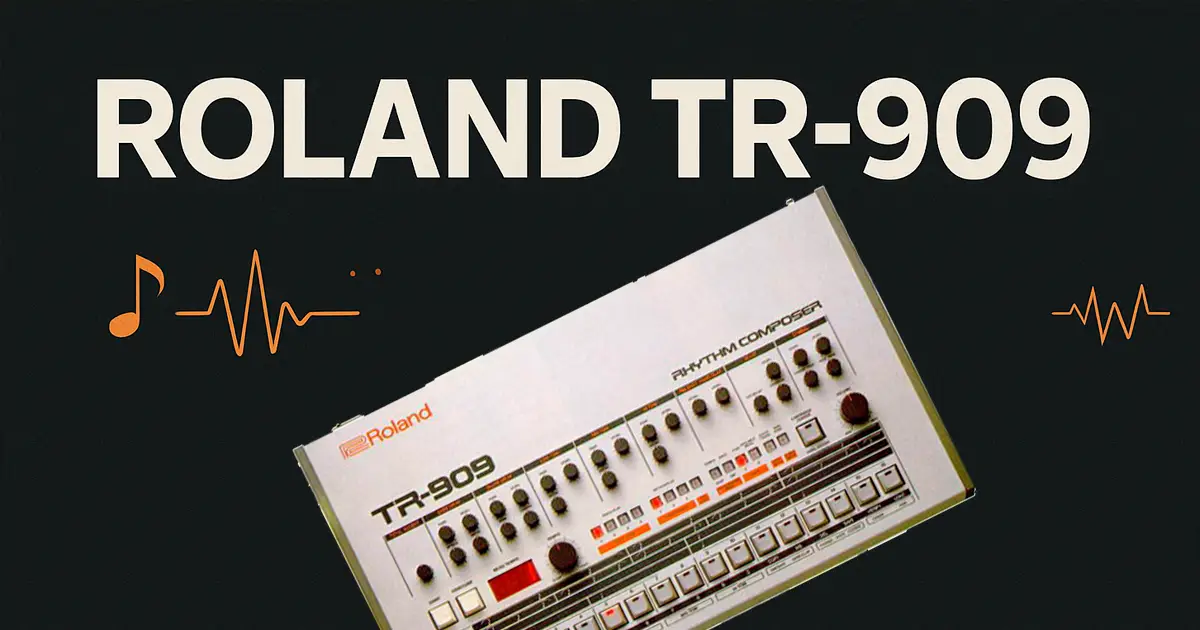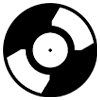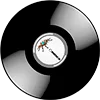
Roland TR-909: a hybrid analog-digital instrument that became the foundation of House and Techno. An analysis of its iconic kick drum, sequencer, and the key differences from the TR-808.
Roland TR-909 Rhythm Composer is an iconic drum machine released by Roland in 1983. Sitting at the crossroads of the analog and digital eras, it became a cornerstone of the emerging sounds of house, techno, acid, trance and rave culture, shaping the signature drum patterns that are still considered a benchmark today.
Historical context
In the early 1980s, most manufacturers were chasing realistic acoustic drum sounds. The TR-909 went against that trend: it did not try to imitate a real drum kit, but delivered a stylized, fat and punchy tone, perfectly suited for clubs and large sound systems.
Paradoxically, on release the TR-909 was a commercial flop. Its true recognition came later, when units hit the second-hand market and young producers in Chicago, Detroit and across Europe discovered its potential.
Hybrid engine
The TR-909 was Roland’s first drum machine to combine digital samples (cymbals, hi-hats) with analog sound circuits (kick, snare, toms). This design delivered:
-
a dense, compressed kick drum with a long tail,
-
a sharp, “clicky” snare,
-
aggressive open hi-hats,
-
crisp crashes/rides that sit perfectly in the mix.
Key sound engine features
-
analog–digital hybrid architecture,
-
hands-on parameter control (tune, decay),
-
a powerful sequencer,
-
shuffle and swing variations.
These features made it possible to create an organic groove that became a defining trait of Detroit techno.
The sequencer: the heart of the TR-909
The 96 PPQN sequencer (still impressive today) offered:
-
step-style programming,
-
real-time recording,
-
individual accent control,
-
support for MIDI and DIN Sync.
Its robust MIDI implementation helped turn the TR-909 into a studio standard in the 1990s.
Why it works so well in clubs
The TR-909 was designed in the era of powerful PA systems. Its sound is characterized by:
-
a tight low-end in the 50–80 Hz range,
-
bright hi-hat attack around 6–8 kHz,
-
a strong mid punch around 200 Hz.
The individual sounds respond extremely well to compression, saturation and EQ, retaining their character while cutting through the mix.
Influence on genres
The TR-909 became a foundation for:
-
Chicago House — Frankie Knuckles, Marshall Jefferson
-
Detroit Techno — Derrick May, Kevin Saunderson, Juan Atkins
-
Acid House — the classic TB-303 + TR-909 combo
-
European Techno / Rave — Jeff Mills, Surgeon
By the 1990s, every serious club system from Berlin to Manchester had 909 drums in its DNA.
Signature TR-909 elements
-
the iconic kick — short, solid, cutting through the mix,
-
bright open hats — metallic, with expressive decay,
-
driving rides — perfect for peak-time sections,
-
the snare — lean body but strong attack that locks into the groove.
The sound is instantly recognizable.
Essential tracks
-
Jeff Mills — The Bells
-
Daft Punk — Revolution 909
-
Phuture — Acid Tracks
-
Joey Beltram — Energy Flash
-
Laurent Garnier — Crispy Bacon
And this list could go on for hundreds of tracks — which says everything about its impact.
Clones and emulations
Today there are countless recreations:
-
Roland TR-09 (Boutique)
-
Roland Cloud 909
-
Behringer RD-9
-
Elektron Rytm 909-style kits
-
Sample packs (Goldbaby, Wave Alchemy, etc.)
Even so, the original TR-909 still sells for thousands of dollars on the used market — its analog circuitry reacts to processing in ways software has yet to fully replicate.
How the TR-909 differs from the TR-808
| Aspect | TR-909 | TR-808 |
|---|---|---|
| Kick drum | aggressive, punchy | deep, boomy |
| Hi-hats | digital, sharp | soft, noise-based |
| Sequencer | more modern | classic |
| Swing | yes | no |
House / Techno = 909
Electro / Hip-Hop / oldschool Trap = 808
Both are kings — just in different worlds.
909 and the modern sound
Today, the 909 is experiencing a full-scale revival:
-
Techno renaissance,
-
Hardgroove,
-
Warehouse revival,
-
Neo-rave.
Producers value its versatility, mix-friendly character and historic authenticity.
Why the engineers chose a hybrid design
Around 1983–84:
-
digital ROM was still expensive,
-
analog circuits offered greater tonal flexibility,
-
hybrid architectures provided a sweet spot between realism and expression.
In hindsight, this choice proved visionary.
Cultural significance
The TR-909 is more than a piece of gear:
-
a symbol of the rave revolution,
-
a core code of underground club culture,
-
an icon in techno studios worldwide.
The 909 logo appears on merch, flyers and vinyl — it’s part of the scene’s visual language.
Conclusion
The Roland TR-909 is a drum machine that didn’t just help define the sound of multiple decades — it shaped an entire musical ecosystem. Its flexibility, unmistakable tone and effortless integration into the mix made it a standard that continues to thrive in clubs, studios and DAWs.
More than 40 years later, the TR-909 remains relevant — its patterns still ignite dancefloors, and its sound is hard to truly replace. A rare case where technology becomes a timeless aesthetic.

